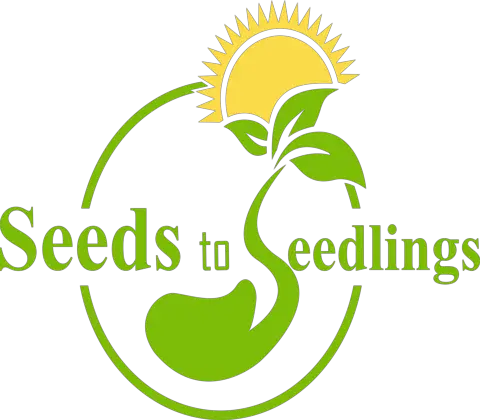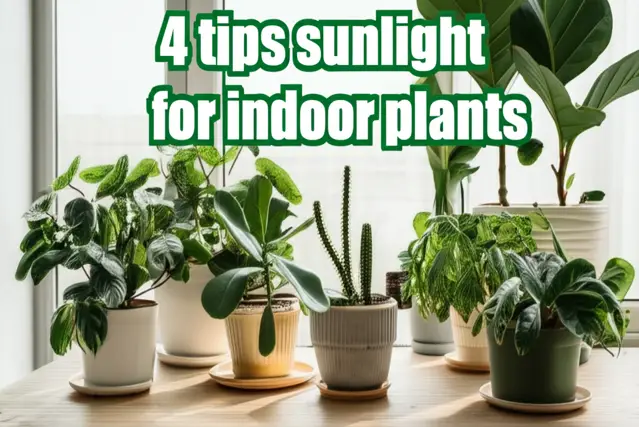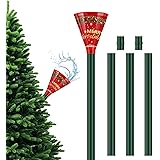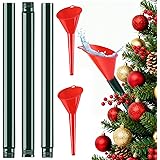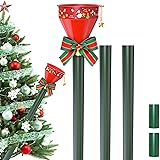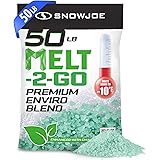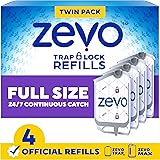Welcome to the ultimate guide on maximizing sunlight for your indoor plants in 2025! Bringing the outdoors in has become a massive trend, transforming homes into lush, green havens. But one of the most crucial elements for successful indoor gardening is often the most challenging to control: sunlight. Without enough of the right kind of light, your beloved houseplants can become leggy, lose their vibrant color, or simply fail to thrive.
This guide provides practical, up-to-date tips to help you master the art of indoor plant lighting, even if you’re dealing with limited natural light or challenging indoor conditions. Get ready to transform your living space into a flourishing indoor garden!
Why Sunlight Matters for Indoor Plants: A 2025 Perspective
Sunlight is the lifeblood of plants. Through photosynthesis, plants use sunlight, water, and carbon dioxide to create the sugars they need for energy and growth. Understanding how sunlight affects your indoor plants is the first step to ensuring their well-being.
In 2025, with increased awareness of sustainable living and biophilic design, creating an optimal environment for indoor plants is more important than ever.
The Science of Photosynthesis and Light Requirements
Photosynthesis is a complex biochemical process. Different wavelengths of light are more effective for photosynthesis than others. Plants primarily use red and blue light for photosynthesis, while green light is mostly reflected (hence why plants appear green).
The amount of light a plant needs varies greatly depending on the species. Some plants are adapted to thrive in bright, direct sunlight, while others prefer the filtered light of a forest floor.
Here’s a simple breakdown of light requirements commonly used for indoor plants:
| Light Level | Description | Suitable Plants | Typical Location |
|---|---|---|---|
| High Light | Direct sunlight for at least 6 hours per day. Can also be very bright indirect light. | Cacti, succulents, citrus trees, herbs like basil and rosemary. | South-facing window (in the Northern Hemisphere) or directly under a strong grow light. |
| Medium Light | Bright, indirect light for most of the day. Some direct morning or late afternoon sun. | Snake plants, ZZ plants, pothos, peace lilies, philodendrons. | East- or west-facing window, or a few feet away from a south-facing window. |
| Low Light | Shady conditions with minimal direct light. | Cast iron plant, Chinese evergreen, some ferns. | North-facing window or further away from any window. Often requires supplemental lighting. |
Current Trends and Statistics in Indoor Plant Care (2025)
The popularity of indoor plants continues to surge in 2025, driven by several factors:
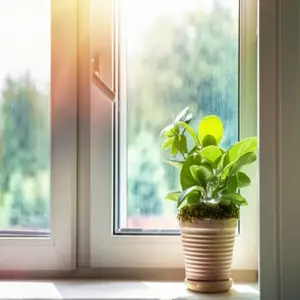
indoor plant light
- Increased urbanization and smaller living spaces: People are seeking ways to connect with nature even when living in apartments or urban environments.
- Growing awareness of the health benefits of plants: Studies have shown that indoor plants can improve air quality, reduce stress, and boost mood.
- The rise of biophilic design: Incorporating natural elements into interior design is a major trend, with plants playing a central role.
- Social media influence: Platforms like Instagram and Pinterest showcase stunning indoor gardens, inspiring others to cultivate their own green spaces.
Statistics (as of 2025, based on market research reports and industry data):
- The global indoor plant market is projected to reach over $60 billion by 2028, with a compound annual growth rate (CAGR) of around 7% from 2023.
- Millennials and Gen Z are the largest consumer groups driving the indoor plant market.
- Online sales of indoor plants have significantly increased, with many nurseries and plant shops offering convenient delivery services.
- Succulents, snake plants, and ZZ plants remain among the most popular choices for beginners due to their low-maintenance requirements.
- The demand for grow lights and other plant accessories is also on the rise as people seek to optimize growing conditions.
Recognizing Signs of Insufficient Sunlight
Knowing the signs of inadequate sunlight is crucial for timely intervention. Here are some common indicators:
- Leggy growth: Stems become long and thin, with leaves spaced far apart, as the plant stretches towards the light.
- Pale or yellowing leaves: Chlorosis, or the loss of chlorophyll, can occur due to insufficient light for photosynthesis.
- Small leaves: New leaves may be significantly smaller than older ones.
- Lack of flowering: Flowering plants may fail to bloom if they don’t receive enough light.
- Slow growth: Overall growth rate is significantly reduced.
- Leaning towards the light source: The plant bends noticeably towards the window or light.
- Loss of variegation: Variegated plants may lose their distinct patterns, becoming mostly green.
Tip #1: Optimize Plant Placement for Natural Sunlight
The first and often most effective step is to strategically place your plants to maximize their access to natural sunlight. Understanding the direction and intensity of sunlight entering your home is key to this process.
Understanding Window Exposure and Light Intensity
The direction your windows face significantly impacts the amount and intensity of sunlight your plants receive:
- South-facing windows: Receive the most intense sunlight throughout the day, especially during the summer months. Ideal for plants that require high light.
- East-facing windows: Receive bright morning sun, which is generally less intense than afternoon sun. Suitable for plants that prefer medium light.
- West-facing windows: Receive strong afternoon sun, which can be quite intense. Monitor plants carefully to prevent scorching.
- North-facing windows: Receive the least amount of direct sunlight, providing mostly indirect light. Best for plants that tolerate low light.
Keep in mind that these are general guidelines, and the actual amount of sunlight can be affected by factors such as:
- Building height and surrounding structures: Tall buildings or trees can block sunlight.
- Window size and clarity: Larger, cleaner windows allow more light to pass through.
- Seasonal changes: The angle and intensity of sunlight vary throughout the year.
Rotating Plants for Even Growth
Plants tend to grow towards the light source, which can lead to uneven growth. Regularly rotating your plants (e.g., every week or two) ensures that all sides receive adequate light, promoting more balanced and symmetrical growth. This is especially important for plants placed near windows.
Considering Distance from the Window
The intensity of sunlight decreases significantly as you move further away from a window. A plant placed directly in front of a south-facing window will receive much more light than one placed several feet away. Consider the light requirements of each plant and position them accordingly. Plants that need high light should be placed closer to the window, while those that prefer low light can be placed further back.
Here’s a general guideline:
- High-light plants: Within 1-2 feet of a south-facing window.
- Medium-light plants: 3-5 feet from a south-facing window, or directly in front of an east- or west-facing window.
- Low-light plants: 6-8 feet from a south-facing window, or in front of a north-facing window.
Real-World Example: Repositioning a Fiddle Leaf Fig
Let’s say you have a Fiddle Leaf Fig that’s showing signs of insufficient light, such as dropping leaves and leggy growth. Initially, it was placed in a corner of a room with a north-facing window. The first step would be to move it closer to the window. If that’s not enough, consider moving it to an east-facing window where it will receive bright morning sun. Rotating the plant regularly will also help ensure even growth. If natural light is still insufficient, you might need to consider supplementing with a grow light (see Tip #3).
Tip #2: Maximize Existing Natural Light
Even if you don’t have ideal window exposure, there are several ways to maximize the natural light that is available in your home. These techniques can make a significant difference in the health and vitality of your indoor plants.
Cleaning Windows Regularly
Dirty windows can significantly reduce the amount of light that reaches your plants. Dust, dirt, and grime can block a substantial percentage of sunlight. Make it a habit to clean your windows regularly, both inside and out, to ensure maximum light transmission. A simple solution of water and vinegar works well for cleaning windows. Consider cleaning them at least once a month, or more frequently if you live in a dusty area.
Using Reflective Surfaces
Reflective surfaces can help bounce sunlight around the room, increasing the overall ambient light and directing more light towards your plants. Consider using mirrors, light-colored walls, and metallic accents to enhance light reflection. Strategically placed mirrors can be particularly effective for bouncing light into darker corners of the room. White or light-colored walls will also reflect more light than dark-colored walls.
Pruning Overhanging Trees or Shrubs
If trees or shrubs outside your windows are blocking sunlight, consider pruning them to allow more light to reach your plants. This is especially important during the winter months when sunlight is already limited. Check with your local municipality for regulations regarding tree pruning before you start. A professional arborist can help you prune trees safely and effectively.
Removing Obstructions Inside the Room
Be mindful of any objects inside the room that might be blocking sunlight from reaching your plants. Bulky furniture, dark curtains, or even other plants can cast shadows and reduce the amount of light available. Rearrange furniture to allow more light to reach your plants. Consider using sheer curtains or blinds that allow light to filter through while still providing privacy.
Strategic Plant Grouping
Grouping plants together can create a more humid microclimate, which some plants appreciate. However, be mindful of spacing to ensure that each plant receives adequate light. Avoid overcrowding plants, as this can block light from reaching the lower leaves and stems. Consider using plant stands or shelves to elevate some plants and allow light to reach plants placed behind them.
Tip #3: Supplement with Artificial Lighting (Grow Lights)
When natural sunlight is insufficient, supplementing with artificial lighting is essential for the health and well-being of your indoor plants. Grow lights provide the specific wavelengths of light that plants need for photosynthesis, allowing them to thrive even in low-light environments.
Understanding Grow Light Spectrum and Types
Different types of grow lights emit different wavelengths of light, which can affect plant growth in different ways. The ideal grow light should provide a balanced spectrum of red and blue light, as these are the most important for photosynthesis. Here’s a breakdown of common grow light types:
- LED Grow Lights: The most energy-efficient and versatile option. LEDs emit a specific spectrum of light tailored to plant growth and produce very little heat. They are available in a wide range of sizes and shapes, from small clip-on lights to large panel lights. LED grow lights are becoming increasingly popular due to their long lifespan and low energy consumption.
- Fluorescent Grow Lights (T5 and CFL): More affordable than LEDs, but less energy-efficient and produce more heat. T5 fluorescent lights are commonly used for seedlings and leafy greens, while CFL (compact fluorescent lamps) are suitable for smaller plants.
- High-Intensity Discharge (HID) Grow Lights (HPS and MH): Produce very high light output but are also very energy-intensive and generate a lot of heat. HPS (high-pressure sodium) lights emit a red-orange spectrum, which is ideal for flowering, while MH (metal halide) lights emit a blue-white spectrum, which is better for vegetative growth. HID lights are typically used for large-scale indoor growing operations. Less common for home use due to heat and energy consumption.
- Incandescent Lights: Not suitable for plant growth. Incandescent lights produce very little of the light spectrum that plants need and generate a lot of heat.
Key Considerations for Choosing Grow Lights (2025):
- Light Spectrum: Look for “full spectrum” or “broad spectrum” LED grow lights that provide a balanced range of red and blue light.
- Light Intensity (PAR/PPFD): PAR (Photosynthetically Active Radiation) and PPFD (Photosynthetic Photon Flux Density) measure the amount of light available for photosynthesis. Higher PAR/PPFD values indicate more intense light. Consider the light requirements of your plants when choosing a grow light with the appropriate intensity.
- Energy Efficiency: LEDs are the most energy-efficient option.
- Heat Output: LEDs produce very little heat, while HID lights generate a lot of heat. Consider the ventilation in your growing area when choosing a grow light with a specific heat output.
- Coverage Area: Choose a grow light that provides adequate coverage for all of your plants.
- Lifespan: LEDs have a much longer lifespan than fluorescent or HID lights.
Calculating Light Requirements and Duration
The amount of artificial light your plants need depends on their light requirements, the type of grow light you’re using, and the distance between the light and the plants. A light meter can help you measure the light intensity in your growing area. However, as a general guideline:
- High-light plants: 14-16 hours of artificial light per day.
- Medium-light plants: 12-14 hours of artificial light per day.
- Low-light plants: 8-12 hours of artificial light per day.
Use a timer to automate the on/off cycle of your grow lights. This ensures that your plants receive consistent light exposure and saves you the hassle of manually turning the lights on and off.
Proper Distance and Placement of Grow Lights
The distance between your grow light and your plants is crucial. If the light is too close, it can scorch the leaves. If it’s too far away, the plants won’t receive enough light. Follow the manufacturer’s recommendations for the optimal distance. Generally:
- LED Grow Lights: 12-24 inches above the plants.
- Fluorescent Grow Lights: 6-12 inches above the plants.
- HID Grow Lights: 24-36 inches above the plants (due to high heat output).
Adjust the height of the grow light as your plants grow to maintain the optimal distance. You can use adjustable stands or hanging systems to easily adjust the height of the light.
Real-World Example: Using Grow Lights for Seedlings
Starting seeds indoors often requires supplemental lighting, especially during the winter months when natural sunlight is limited. T5 fluorescent grow lights or LED grow lights are ideal for seedlings. Place the lights a few inches above the seedlings and provide 14-16 hours of light per day. As the seedlings grow, adjust the height of the lights to maintain the optimal distance. This will ensure that the seedlings receive enough light to develop strong stems and healthy leaves.
Regulations and Standards for Grow Lights (2025)
As the use of grow lights becomes more widespread, regulations and standards are evolving to address energy efficiency, safety, and environmental concerns. In 2025, it’s important to be aware of the following:
- Energy Efficiency Standards: Many countries and regions have implemented energy efficiency standards for lighting products, including grow lights. Look for grow lights that are certified by energy efficiency programs such as Energy Star. These lights meet specific performance criteria and consume less energy.
- Safety Standards: Grow lights must meet safety standards to prevent electrical hazards and fire risks. Look for grow lights that are certified by safety organizations such as UL (Underwriters Laboratories) or ETL (Intertek). These certifications indicate that the lights have been tested and meet safety requirements.
- RoHS Compliance: RoHS (Restriction of Hazardous Substances) is a European Union directive that restricts the use of certain hazardous substances in electrical and electronic equipment, including grow lights. Ensure that the grow lights you purchase are RoHS compliant to minimize environmental impact.
- Local Regulations: Some municipalities may have specific regulations regarding the use of grow lights, particularly in residential areas. Check with your local authorities to ensure that you comply with any applicable regulations. This may include restrictions on light pollution or energy consumption.
Tip #4: Adapt Light Based on Plant Needs & Season
Plant light requirements aren’t static! Factors like the plant’s growth stage and the changing seasons require you to be flexible in your approach to indoor plant lighting.
Understanding Dormancy and Seasonal Light Changes
Many plants experience a period of dormancy during the winter months when they require less light and water. During this time, you may need to reduce the amount of supplemental lighting you provide. Observe your plants carefully for signs of dormancy, such as slowed growth or leaf drop. Conversely, during the growing season (spring and summer), plants require more light and water to support their growth. You may need to increase the amount of supplemental lighting during this time.
The angle and intensity of sunlight also change with the seasons. During the winter months, the sun is lower in the sky, and the days are shorter. This means that plants may receive less direct sunlight, even if they are placed in the same location as during the summer. You may need to adjust the position of your plants or increase the amount of supplemental lighting to compensate for the reduced sunlight.
Adjusting Light for Different Growth Stages
Plants have different light requirements at different stages of their growth. Seedlings, for example, require bright, indirect light to develop strong stems and healthy leaves. Flowering plants require more intense light to bloom. Consider the growth stage of your plants when determining their light requirements.
For example, if you’re growing herbs indoors, you may need to provide more light during the flowering stage to encourage abundant blooms. If you’re growing leafy greens, you may need to provide more light during the vegetative stage to promote lush foliage.
Monitoring Plant Health and Adjusting Accordingly
The best way to determine if your plants are receiving adequate light is to monitor their health closely. Look for signs of insufficient light, such as leggy growth, pale leaves, or lack of flowering. Also, watch for signs of excessive light, such as scorched leaves or bleached spots. Adjust the amount of natural or artificial light accordingly. Regularly inspect your plants for pests and diseases, as these can also affect their health and appearance.
Keep a journal to track the light conditions in your growing area and the health of your plants. This will help you identify patterns and make informed adjustments to your lighting strategy. Take photos of your plants regularly to document their growth and identify any changes in their appearance.
Real-World Example: Adjusting Light for a Succulent Collection
Succulents typically require bright, direct sunlight. During the summer, a south-facing window may provide adequate light. However, during the winter, the sunlight may be less intense, and you may need to supplement with a grow light. Monitor your succulents for signs of etiolation (stretching) or fading color, which indicate insufficient light. Adjust the position of the grow light or increase the duration of light exposure to compensate for the reduced sunlight.
Also, be aware that some succulents can sunburn if exposed to intense sunlight after being grown in low-light conditions. Acclimate succulents gradually to brighter light to prevent sunburn. Start by placing them in a slightly shadier location and gradually move them to a sunnier spot over a period of several days or weeks.
Troubleshooting Common Lighting Problems
Even with careful planning, you may encounter lighting-related issues with your indoor plants. Here are some common problems and their solutions:
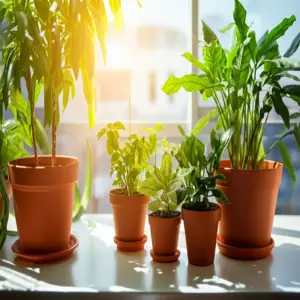
grow lights alternative
- Sunburn: Caused by excessive direct sunlight, especially on plants that are not acclimated to bright light. Move the plant to a shadier location or use sheer curtains to filter the sunlight.
- Etiolation (Leggy Growth): Caused by insufficient light. Move the plant to a brighter location or supplement with a grow light.
- Pale or Yellowing Leaves: Can be caused by insufficient light or nutrient deficiencies. Ensure that the plant is receiving adequate light and fertilize regularly with a balanced fertilizer.
- Leaf Drop: Can be caused by sudden changes in light, temperature, or humidity. Provide consistent environmental conditions and avoid moving plants frequently.
- Lack of Flowering: Caused by insufficient light or improper fertilization. Provide adequate light and use a fertilizer that is high in phosphorus to encourage blooming.
- Brown Leaf Tips: Can be caused by dry air, inconsistent watering, or excessive fertilizer. Increase humidity by misting plants regularly or using a humidifier. Water plants consistently and avoid over-fertilizing.
When diagnosing plant problems, consider all possible causes and rule them out one by one. Check the plant’s light requirements, watering schedule, fertilization routine, and environmental conditions. Consult with a local plant expert or online forum for advice if you are unsure of the cause of the problem.
Beyond Sunlight: Other Essential Plant Care Tips
While sunlight is critical, it’s just one piece of the puzzle. Proper watering, fertilization, humidity, and pest control are also essential for healthy indoor plants.
Watering Techniques: Avoiding Overwatering and Underwatering
Overwatering is one of the most common mistakes made by indoor plant owners. Overwatering can lead to root rot, which can kill the plant. Allow the soil to dry out slightly between waterings. Check the moisture level of the soil by inserting your finger a few inches into the soil. If the soil feels moist, wait a few more days before watering. Use a well-draining potting mix and ensure that the pot has drainage holes. Underwatering can also damage plants, causing them to wilt and dry out. Water thoroughly when the soil is dry to the touch.
Fertilization: Providing Essential Nutrients
Indoor plants need regular fertilization to provide them with the nutrients they need to grow and thrive. Use a balanced fertilizer that contains nitrogen, phosphorus, and potassium. Fertilize plants during the growing season (spring and summer) and reduce or eliminate fertilization during the dormant season (fall and winter). Follow the instructions on the fertilizer label carefully to avoid over-fertilizing. Over-fertilizing can burn the roots of the plant and damage the foliage.
Humidity: Creating a Comfortable Environment
Many indoor plants, especially tropical plants, prefer high humidity. Dry air can cause leaf tips to turn brown and stunt growth. Increase humidity by misting plants regularly, using a humidifier, or placing plants on a pebble tray filled with water. Grouping plants together can also help to create a more humid microclimate.
Pest Control: Identifying and Treating Common Pests
Indoor plants are susceptible to pests such as aphids, spider mites, mealybugs, and scale. Regularly inspect your plants for signs of pests. If you find pests, treat them promptly with insecticidal soap, neem oil, or other appropriate pesticides. Isolate infested plants from other plants to prevent the spread of pests.
Future Trends in Indoor Plant Lighting (2025 and Beyond)
The future of indoor plant lighting is likely to be shaped by several trends:

natural light exposure
- Smart Grow Lights: Smart grow lights that can be controlled remotely via smartphone apps are becoming increasingly popular. These lights allow you to adjust the light spectrum, intensity, and duration to optimize plant growth. Some smart grow lights also have built-in sensors that monitor environmental conditions and adjust the lighting automatically.
- AI-Powered Lighting: Artificial intelligence (AI) is being used to develop lighting systems that can learn the specific light requirements of different plants and adjust the lighting accordingly. AI-powered lighting systems can optimize plant growth and reduce energy consumption.
- Biophilic Lighting: Biophilic lighting aims to mimic natural sunlight and create a more natural and healthy indoor environment. Biophilic lighting systems can be designed to change the color and intensity of light throughout the day to match the natural circadian rhythm.
- Sustainable Lighting: The demand for sustainable and energy-efficient grow lights is growing. Manufacturers are developing grow lights that use less energy and have a longer lifespan. Recycled materials are also being used to manufacture grow lights.
These trends are driven by a combination of factors, including technological advancements, increasing awareness of the health benefits of plants, and growing concern about environmental sustainability. As technology continues to evolve, indoor plant lighting is likely to become even more sophisticated and efficient.
FAQ: Your Indoor Plant Sunlight Questions Answered
Still have questions about sunlight for indoor plants? Here are some frequently asked questions:
What is the best window direction for most indoor plants?
South-facing windows generally provide the most light, making them suitable for high-light plants. East-facing windows offer gentle morning sun, ideal for medium-light plants. West-facing windows provide strong afternoon sun, which can be intense for some plants. North-facing windows offer the least amount of light and are best for low-light plants.
How can I tell if my plant is getting too much sunlight?
Signs of too much sunlight include scorched leaves, bleached spots, and a general fading of color. Move the plant to a shadier location or use sheer curtains to filter the sunlight.
Can I use regular light bulbs as grow lights?
While you can use incandescent or fluorescent bulbs, they are not ideal as grow lights. They don’t provide the specific wavelengths of light that plants need for photosynthesis and can generate a lot of heat. LED grow lights are the best option for indoor plants.
How often should I rotate my plants?
Rotate your plants every week or two to ensure that all sides receive adequate light. This will promote more balanced and symmetrical growth. Rotating the plants is essential and here you can find the information about it.
Do all plants need the same amount of sunlight?
No, different plants have different light requirements. Some plants need bright, direct sunlight, while others prefer shady conditions. Research the light requirements of each plant before placing it in your home.
Can I put my indoor plants outside during the summer?
Yes, you can put your indoor plants outside during the summer, but acclimate them gradually to the brighter light and higher temperatures. Avoid placing them in direct sunlight, which can scorch their leaves. If you decide to put your plants outside during the summer you should read about proper watering.
What is a “full spectrum” grow light?
A full-spectrum grow light emits a balanced range of red and blue light, as well as other wavelengths that are beneficial for plant growth. These lights are designed to mimic natural sunlight and provide plants with the light they need for photosynthesis. LED lights are known for being full spectrum but remember to check the manufacturer specifications.
How do I measure the light intensity in my growing area?
You can use a light meter to measure the light intensity in your growing area. PAR (Photosynthetically Active Radiation) and PPFD (Photosynthetic Photon Flux Density) are common metrics for measuring light intensity. Alternatively, you can use a smartphone app that estimates light intensity.
Are there any plants that can thrive in complete darkness?
No, all plants need some light to survive. However, some plants can tolerate very low light conditions. These include cast iron plants, Chinese evergreens, and some ferns. Even the most resilient plants in low light conditions require proper fertilization for optimal health.
What are the best grow lights for succulents?
LED grow lights are the best option for succulents. Look for full-spectrum LED grow lights that emit a bright, white light. Place the lights a few inches above the succulents and provide 12-14 hours of light per day.
Conclusion: Cultivating a Bright Future for Your Indoor Plants
Mastering the art of providing adequate sunlight for your indoor plants is a journey that requires observation, adaptation, and a willingness to learn. By understanding the principles of photosynthesis, optimizing plant placement, maximizing existing natural light, supplementing with artificial lighting, and adapting your approach based on plant needs and seasonal changes, you can create a thriving indoor garden that brings joy and beauty to your living space. Remember to stay informed about the latest trends and regulations in indoor plant care, and don’t be afraid to experiment to find what works best for your plants.
The most important thing is to pay attention to your plants’ needs and adjust your care accordingly. As we move further into 2025, the fusion of technology and biophilic design offers exciting possibilities for creating even more optimal and sustainable environments for our beloved houseplants. With these tips and a little dedication, you can cultivate a bright and flourishing future for your indoor plant collection, transforming your home into a vibrant, green oasis. Keep learning, keep growing, and enjoy the rewarding experience of nurturing your indoor plants!
Auto Amazon Links: No products found.
IPOOLTENG Christmas Tree Watering Funnel 3 Tube 1 Funnels 40 Inch - 3 Section Plastic Christmas Tree Funnel Waterer, Long Funnels for Watering Trees, Best Gifts for Your Parents to Water Tree
$15.53 (as of December 4, 2025 15:26 GMT +00:00 - More info- Product prices and availability are accurate as of the date/time indicated and are subject to change. Any price and availability information displayed on [relevant Amazon Site(s), as applicable] at the time of purchase will apply to the purchase of this product.
Christmas Tree Watering Funnel, Real Christmas Tree Water Long Funnel About 40 Inch, Trees Watering System for Water Indoor Outdoor
$15.99 (as of December 4, 2025 15:26 GMT +00:00 - More info- Product prices and availability are accurate as of the date/time indicated and are subject to change. Any price and availability information displayed on [relevant Amazon Site(s), as applicable] at the time of purchase will apply to the purchase of this product.
Christmas Tree Watering Funnel-39 Inch Adjustable 3-Section Long Funnel Spout Funnel Watering System Xmas Plant Watering Tool for Large Indoor Outdoor Plants
$14.59 (as of December 4, 2025 15:26 GMT +00:00 - More info- Product prices and availability are accurate as of the date/time indicated and are subject to change. Any price and availability information displayed on [relevant Amazon Site(s), as applicable] at the time of purchase will apply to the purchase of this product.
LANNEY 48.6 Inch Christmas Tree Watering Funnel, Extra Long Xmas Tree Waterer Spout with Metal Tube, Christmas Watering Device System Tool for Indoor and Outdoor Real Live Plant
$13.99 (as of December 4, 2025 15:26 GMT +00:00 - More info- Product prices and availability are accurate as of the date/time indicated and are subject to change. Any price and availability information displayed on [relevant Amazon Site(s), as applicable] at the time of purchase will apply to the purchase of this product.
Christmas Tree Watering System, 50 Inch Long Christmas Tree Watering Funnel Tool for Xmas Plant Watering Indoor Outdoor Large Plants
$16.99 (as of December 4, 2025 15:26 GMT +00:00 - More info- Product prices and availability are accurate as of the date/time indicated and are subject to change. Any price and availability information displayed on [relevant Amazon Site(s), as applicable] at the time of purchase will apply to the purchase of this product.
Snow Joe Premium Enviro Blend Ice Melt, Green-Coated Deicer Crystals, 50 lb - Safer Melter for Vegetation, Concrete & Metals w/ Anti-Corrosion Calcium Magnesium Acetate
$32.97 (as of December 5, 2025 17:01 GMT +00:00 - More info- Product prices and availability are accurate as of the date/time indicated and are subject to change. Any price and availability information displayed on [relevant Amazon Site(s), as applicable] at the time of purchase will apply to the purchase of this product.
Muddy Mat® Shown on TV Super Absorbent Microfiber Dog Door Mat for Muddy Paws, Non-Slip Washable Pet Rug, Quick Dry Chenille Entryway Carpet, Machine Washable Indoor Outdoor mat, Grey 30"x19"
$19.95 (as of December 5, 2025 17:01 GMT +00:00 - More info- Product prices and availability are accurate as of the date/time indicated and are subject to change. Any price and availability information displayed on [relevant Amazon Site(s), as applicable] at the time of purchase will apply to the purchase of this product.
Cuisinart 6.5" Cast Iron Smashed Burger Press, Round Flat Edge Grill Press for Crispy Smash Burgers, Burger Tool for Grill and Griddle Accessories, for BBQs and Tailgates
$24.99 (as of December 5, 2025 17:01 GMT +00:00 - More info- Product prices and availability are accurate as of the date/time indicated and are subject to change. Any price and availability information displayed on [relevant Amazon Site(s), as applicable] at the time of purchase will apply to the purchase of this product.
Zevo Flying Insect Trap Official Refill Cartridges - Fits Both Zevo Trap & MAX Indoor Fly Trap - Authentic Trap+Lock Technology to Catch Gnats, House & Fruit Flys (4 Official Refill Cartridges)
$13.47 (as of December 5, 2025 17:01 GMT +00:00 - More info- Product prices and availability are accurate as of the date/time indicated and are subject to change. Any price and availability information displayed on [relevant Amazon Site(s), as applicable] at the time of purchase will apply to the purchase of this product.
OLANLY Dog Door Mat for Muddy Paws 30x20, Absorbs Moisture and Dirt, Absorbent Non-Slip Washable Doormat, Quick Dry Chenille Mud Mat for Dogs, Entry Indoor Entryway Carpet for Inside Floor, Grey
$9.99 (as of December 5, 2025 17:01 GMT +00:00 - More info- Product prices and availability are accurate as of the date/time indicated and are subject to change. Any price and availability information displayed on [relevant Amazon Site(s), as applicable] at the time of purchase will apply to the purchase of this product.
